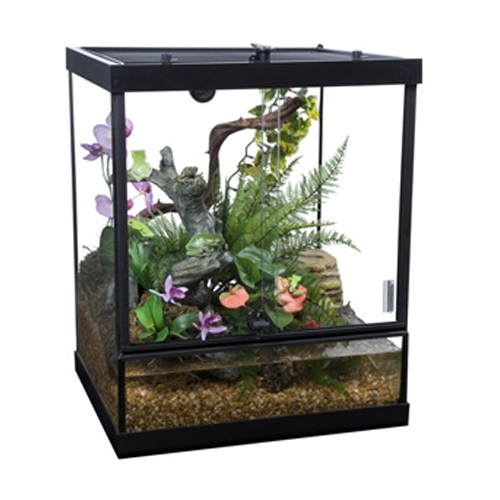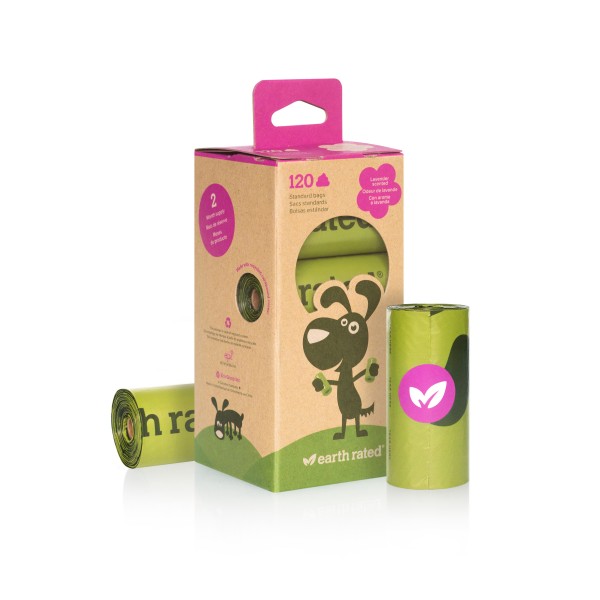
All turtles have the distinctive shell which is, in reality, a joining of the ribs to form the shell which offers protection. The shell is called a carapace. Scales form, in most turtles, over the carapace. The lower portion of the body is known as the plastron. For our purposes, we have divided the turtles into two groups: the turtles, meaning mainly water dwelling animals, and the tortoises, meaning mainly land dwelling animals. The differences between the two are significant. Turtles have thin legs, suitable for life in the water, while the tortoises have thick legs, which are better for land travel. The feet of most turtles are webbed to aid in swimming while the feet of tortoises are flatter. Generally the shell of turtles is low and streamlined to allow for quicker movement in water, while the shell of the tortoises is higher to allow for easier travel through bushes or over land.
Turtles- Since turtles are mainly aquatic, the best environment for them is probably an aquarium. The longer tanks (like a 20 gallon long aquarium) provide a more suitable environment with more room for swimming than the square tanks. Even though they are water-loving reptiles, the tank must be set up with an area where the turtle can get out of the water and dry himself completely. This is important because it helps prevent diseases due to a wet shell that can never dry entirely. If rocks are used as the drying area, make sure that there are no places for the turtle to get stuck. The water area should be filtered, which greatly decreases the necessity of cleaning the tank and helps prevent the build-up of bacteria and parasites which can harm your pet. The tank should be covered with an incandescent hood that can provide some additional heat to the aquarium. Other warmth for the turtle can be provided by using an under-tank heater or a submersible heater in the water. This is important because the turtle greatly prefers warm water. The addition of a small amount of aquarium (or non-iodized) salt will help add trace elements to the water.
Tortoises- These reptiles should be housed in a flat environment that is easy to clean. The size of the cage should allow the tortoise plenty of room for movement. A sheet of heavy plastic on the floor of the cage is good to use, or you can use Astroturf which is more attractive. Both can be easily removed for cleaning. Aquarium gravel can be used as a base, but it is more difficult to clean. The cage should be kept warm using a hot rock or an under-the-tank heater. Incandescent lighting will help produce some heat, but it will not be sufficient once the light is turned off. Water should be provided in a flat, shallow dish – one that is heavy enough so the tortoise will not tip it over. The water dish should be shallow because the land tortoise could drown if he cannot get out of the dish. Some potted plants can be placed in the cage, but at a level high enough so the tortoise will not eat them. A box or a flower pot on its side will give the tortoise a place to feel secure. Avoid making rock formations that the tortoise can get stuck in.
In both cases, you could locate the cage or aquarium in a position where the turtle or tortoise can get some direct sunlight. The ultraviolet rays are very beneficial to them. They must, however, be able to get out of the sunlight if they wish.
Turtles- The maintenance of the aquarium is essentially the same as a tropical fish tank. Change the water when necessary (in this case all the water can be changed if you wish), and clean the rocks and filter. Sponge down the inside of the aquarium using a sponge that has not been used with soap. If there is an odour to the tank, you can use a mild bleach solution to clean the inside as long as it’s rinsed thoroughly. If you remove all the water from the turtle tank, remember to unplug the heater.
Tortoises- Remove the plastic or Astroturf and wash in a detergent or bleach solution. Clean the water bowl carefully using the same detergent or bleach and rinse carefully. The sides of the tank should be cleaned, as well as any rocks or decorations in the cage. The secret here, as is the case with most reptiles, is to make sure the cage is perfectly dry before replacing the tortoise.

Both turtles and tortoises generally have no teeth. They have a strong jaw or a hook shaped mouth that allows them to pull the food apart. Some have a modified cartilage that forms ridges in the jaws or inside their mouths, acting as teeth.
Turtles- Being aquatic, turtles can be fed anything that would occur in their native habitat. They can be fed goldfish, or guppies. Earthworms are also acceptable. Prepared foods in the form of turtle foods can be used, but should be supplemented for variety. Freeze dried tubifex worms can be fed, as well as the live aquarium plant called anacharis. Live plants will get torn apart by the turtles and the remains should be removed using a net once the turtle has finished eating.
Tortoises- These reptiles thrive on a variety of foods including small slices of fruits and vegetables. Some tortoises can be fed canned dog or cat food on a limited basis. Avoid vegetables from the cabbage family and do not feed them lettuce. Small pieces are best as they are the most easily consumed. Remove any uneaten portions before they can spoil. Clean, fresh water should always be available.
In both cases, variety is the key. In nature, turtles and tortoises can travel large distances foraging for the foods that they require. In captivity, where their range is obviously more limited, they must be offered a diet that can compensate for this.
Both turtles and tortoises will go into hibernation if the temperature becomes too cool. This is because they are reptiles whose lifestyle depends solely on the temperature of their surroundings. If too cool, the normal bodily functions will slow down and the animal will hibernate. As the temperature increases, so does the metabolism of the reptile, hence, they become more active.
Turtles and tortoises can be bred in captivity but not usually in the environment provided by pet owners.
Turtles- The most common problem facing pet owners is “soft shell” disease (where the shell becomes soft and deformed). This can be prevented by a balanced diet, a dry location and the availability of natural sunlight. Some turtles can catch a form of pneumonia which is usually caused by a draft.
Tortoises- Drafts seem to be the biggest problem facing the pet owner. A simple cold can be a serious threat to your pet’s health if left untreated.
For both turtles and tortoises, the most important aspects of good health are: a balanced, varied and complete diet that offers them the nutrition they require; and a clean, well maintained, warm environment.
Be sure you and the children wash their hands after handling or cleaning the turtles.
REPTILES














